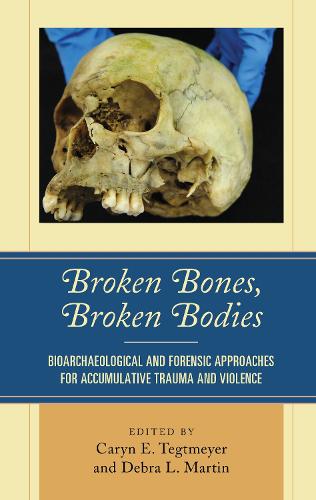
Broken Bones, Broken Bodies: Bioarchaeological and Forensic Approaches for Accumulative Trauma and Violence
(Hardback)
Publishing Details
Broken Bones, Broken Bodies: Bioarchaeological and Forensic Approaches for Accumulative Trauma and Violence
By (Author) Caryn E. Tegtmeyer
Edited by Debra L. Martin
Contributions by Petra Banks
Contributions by Eric J. Bartelink
Contributions by Derek A. Boyd
Contributions by John J. Crandall
Contributions by Michelle Davenport
Contributions by Carlina de la Cova
Contributions by Sharon M. Derrick
Contributions by William O. Gazza
Bloomsbury Publishing PLC
Lexington Books
14th July 2017
United States
Classifications
Professional and Scholarly
Non Fiction
617.1
Physical Properties
Hardback
270
Width 159mm, Height 238mm, Spine 26mm
590g
Description
Injury recidivism is a continuing health problem in the modern clinical setting and has been part of medical literature for some time. However, it has been largely absent from forensic and bioarchaeological scholarship, despite the fact that practitioners work closely with skeletal remains and, in many cases, skeletal trauma. The contributors to this edited collection seek to close this gap by exploring the role that injury recidivism and accumulative trauma plays in bioarchaeological and forensic contexts. Case examples from prehistoric, historic, and modern settings are included to highlight the avenues through which injury recidivism can be studied and analyzed in skeletal remains and to illustrate the limitations of studying injury recidivism in deceased populations.
Reviews
An engaging collection of papers concerning a health condition that many bioarchaeologists will have encountered but may not have formally identified. The cultural contexts of the studies are quite varied, and this helps to illustrate the different circumstances in which injury recidivism may occur.... I hope this stimulating volume encourages scholarly attention to these areas. * International Journal of Paleopathology *
This book captures a zeitgeist in the study of human remains, reflecting the coming-together of shared research themes and ethical concerns in the disciplines of forensic anthropology and bioarcheology. These diverse studies show that regardless of time and space, the lives of injury recidivists have shared commonalities: structural violence and socio-economic inequalities. Their osteobiographies are powerful; and at times, make for heart-breaking reading. They serve to remind us that our work has impact and resonance for understanding the wider social context in which injuries are sustained, all too frequently by the most vulnerable in a community. -- Rebecca Redfern, Museum of London
Author Bio
Debra L. Martinis professor of biological anthropology at the University of Nevada, Las Vegas. Caryn E. Tegtmeyer is a doctoral candidate in the Department of Anthropology at the University of Nevada, Las Vegas.
